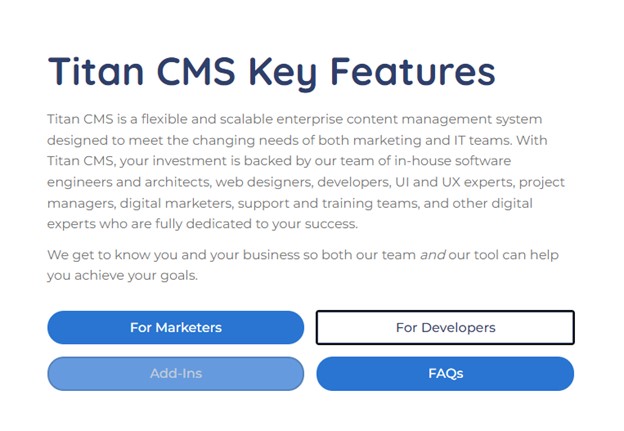Updated: March 8, 2023; Aug. 17, 2022
Originally Published: July 25, 2022
What Are the Web Content Accessibility Guidelines (WCAG)?
WCAG is a global standard of specifications for web content accessibility. Many organizations use WCAG as a standard to benchmark accessibility across digital products, and website accessibility lawsuits regularly reference WCAG to highlight the impact of accessibility barriers.
Why Is WCAG Important?
In mid-March of 2022, the Department of Justice (DOJ) published and announced new guidance on web accessibility as it relates to the Americans with Disabilities Act (ADA). The guidance renewed DOJ’s consistent position that the ADA applies to web content for state and local governments and businesses open to the public.
DOJ cited Section 508 Standards and Web Content Accessibility Guidelines for web accessibility as existing technical standards for guidance. The DOJ documentation further stated: “Businesses and state and local governments have flexibility in how they comply with the ADA’s general requirements of nondiscrimination and effective communication. But they must comply with the ADA’s requirements.”
This guidance from the Justice Department, while newly announced, doesn’t change the nature of the work to be done. It provides plain-language explanations of the importance of web accessibility; common barriers to universal access; when the ADA requires web content to be accessible; and it offers tips for achieving compliance with web content.
A March 18, 2022 press release announcing the publication of the latest guidance shows that web accessibility is an enforcement priority for the Justice Department: “…(the guidance) reviews the department’s ongoing work to advance website accessibility for people with disabilities through statements of interest and enforcement matters. For example, the department recently entered into numerous settlements with businesses — including Hy-Vee, Inc., The Kroger Co., Meijer, Inc., and Rite Aid Corporation to ensure that websites for scheduling vaccine appointments are accessible.”
How Does WCAG Work?
WCAG outlines a series of “success criteria” to explain how to make web content more accessible to people with disabilities.
Details in WCAG 2.0 were first published in December of 2008. The WCAG 2.1 update followed in June of 2018. The way we display and interface with web pages changed dramatically in those 10 years, notably with the rise of responsive design and touch screens. The nature of how we use the web continues to advance, and so does WCAG.
WCAG 2.2 Updates Will Make Content More Usable for Everyone
We expect finalized publication of version 2.2 in 2023. The updates and additions will improve accessibility across newer device types and address a wider range of disabilities. These guidelines will make web content more usable by individuals whose abilities change due to aging. Many guidelines are likely to improve usability for all content consumers.
WCAG guidance has always sought to accommodate, among other issues:
- blindness and low vision
- deafness and hearing loss
- limited movement
- speech disabilities
- photosensitivity
- learning disabilities
- cognitive limitations
The 2.2 standards focus on three major groups:
- users with cognitive or learning disabilities
- users with low vision
- users with disabilities specific to mobile devices
What’s Changed and What’s New
Criterion 2.4.7 Focus Visible defines success as a visible indication of keyboard focus – allowing the user to visually differentiate the element receiving keyboard input. This criterion has changed from Level AA in WCAG 2.1 to Level A in WCAG 2.2 – making it even more important to implement.
Here’s an example of visible indication of keyboard focus from our Titan CMS website:

New at Level A
- Accessible Authentication – This criterion recommends that websites offer alternatives for processes that test cognitive function, including puzzles, calculators, and support for password entry either manually or by copy/paste.
- Offering Consistent Help via a contact mechanism, contact information, or self-help options.
- Page Break Navigation – Links to specific content must function regardless of whether the current page is zoomed or otherwise manipulated. If, for example, the user is reading page 14 and the citation for a piece of information is elsewhere, the “See citation on page 37” link should work if the page has been translated, enlarged, etc.
- Redundant Entry – Allowing previously entered information to be auto-populated or available for the user to select, to avoid re-entry of data.
New at Level AA
- Offer an alternative for Dragging Movements.
- Visible Controls – Do not require hover to engage controls.
- Target Size (Minimum) and offset, to ease selection of items on a touch screen or to accommodate imprecise mobility.
- Focus Appearance (Minimum) – When a user navigates to an element with the keyboard, the element receiving keyboard focus must have appropriate contrast level, minimum contrasting area, and so on.
New at Level AAA
- Focus Appearance (Enhanced) - When a user navigates to an element with the keyboard, the element receiving keyboard focus must have contrast levels, minimum contrasting area, and so on managed to a higher specification for Level AAA.
As with previous updates, the new criteria in WCAG 2.2 will be backward compatible. If your site previously met the WCAG 2.1 standard and that standard is a requirement for your organization, you’re in a good place. Your organization can now give designers, developers, and content creators the directive to aim for WCAG 2.2 conformance. Content that conforms to WCAG 2.2 will also conform to 2.1 and 2.0. So new development and updates on your site(s) can be future-proof at no loss in historic conformance.
If you need assistance determining whether your website meets current WCAG guidelines or would like to start planning for WCAG 2.2 compliance, don’t hesitate to contact us. We're happy to help!






